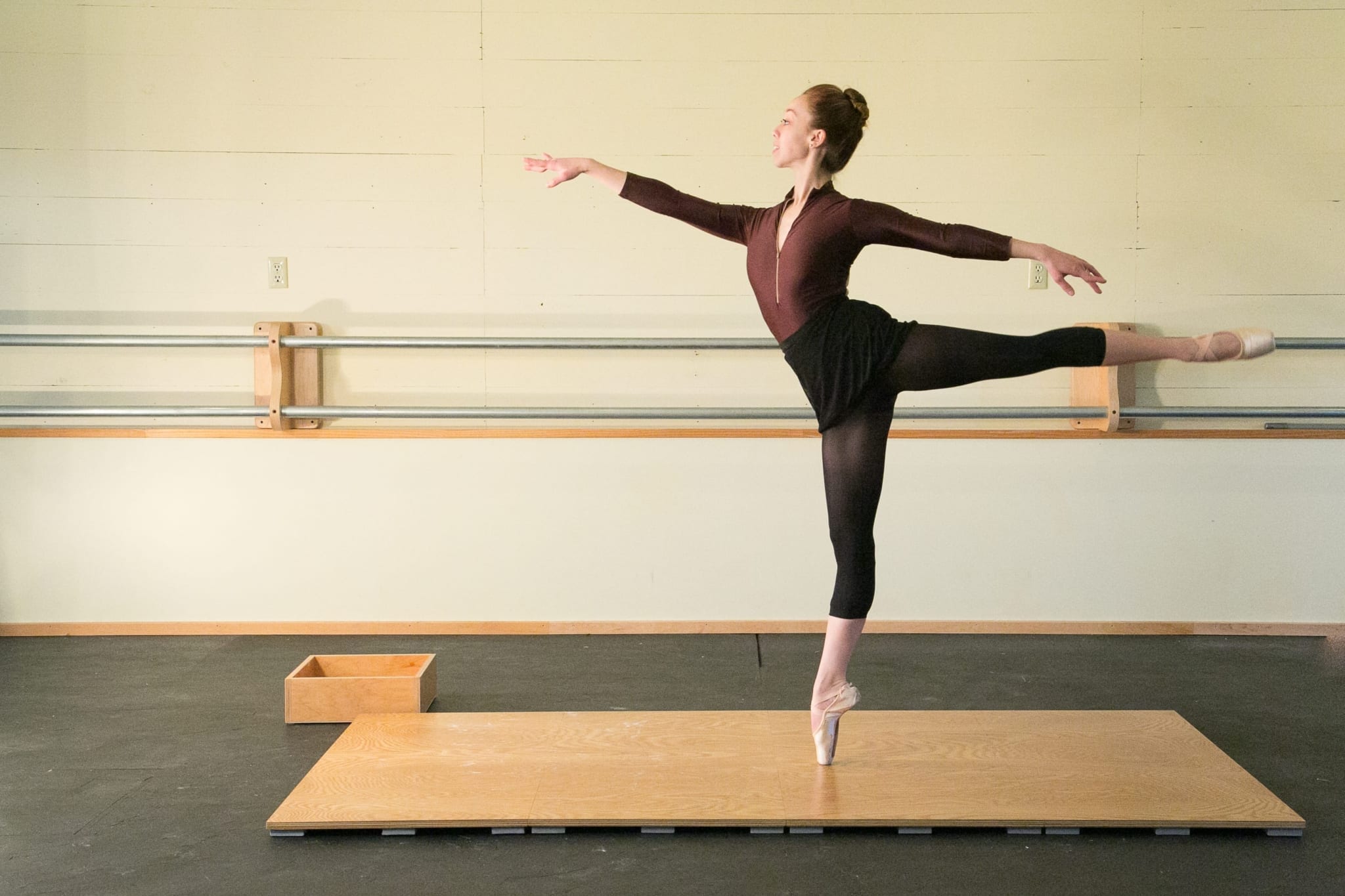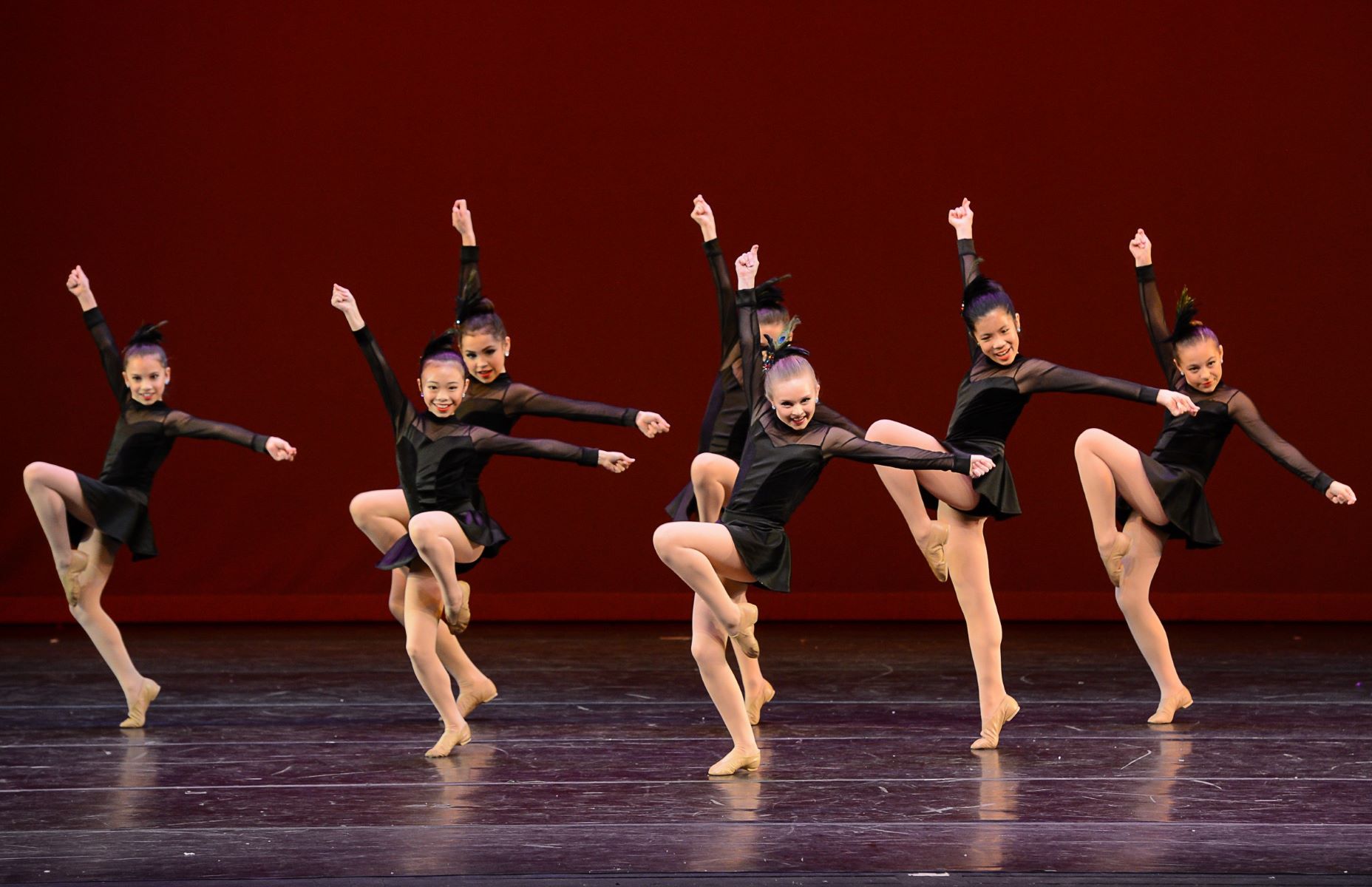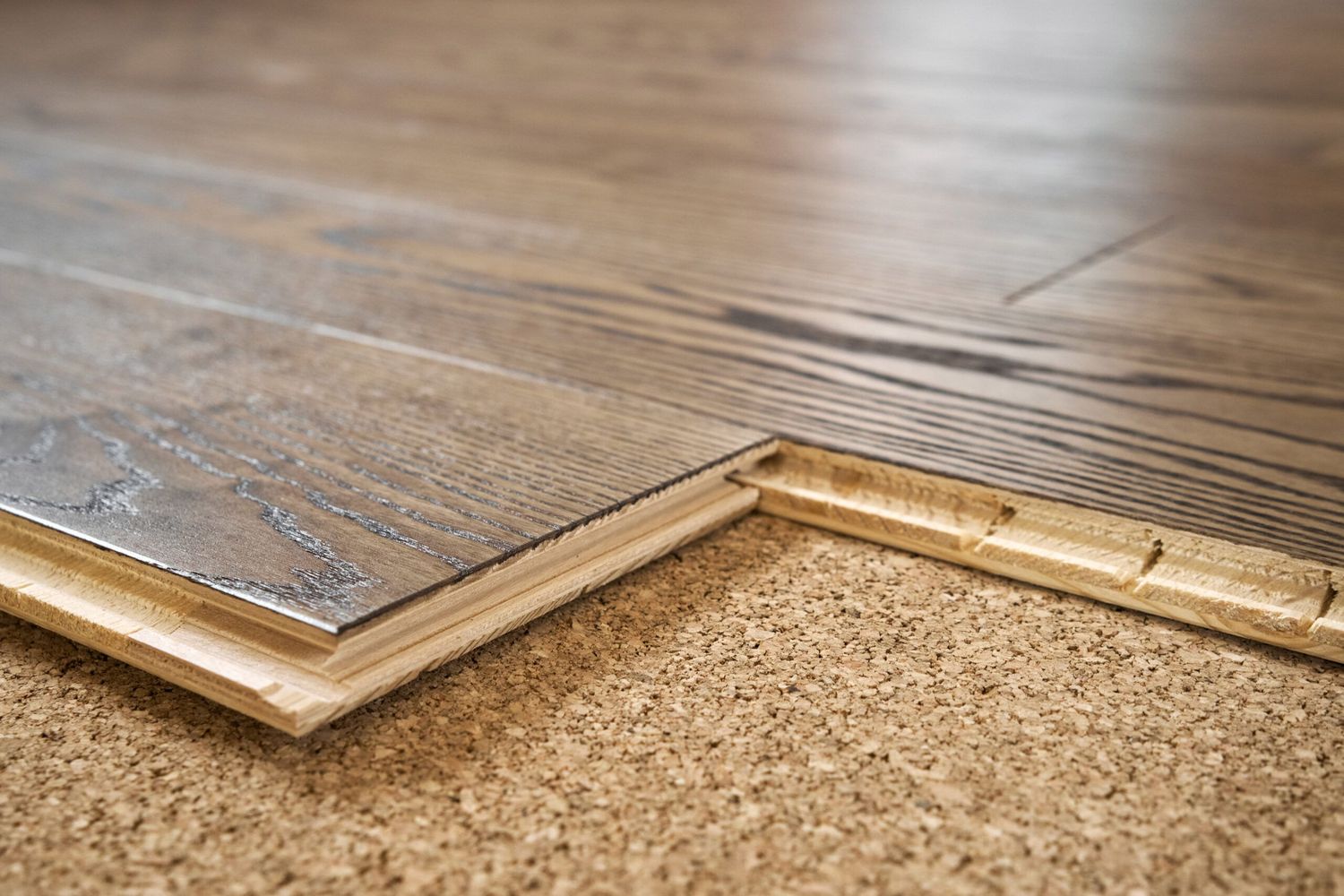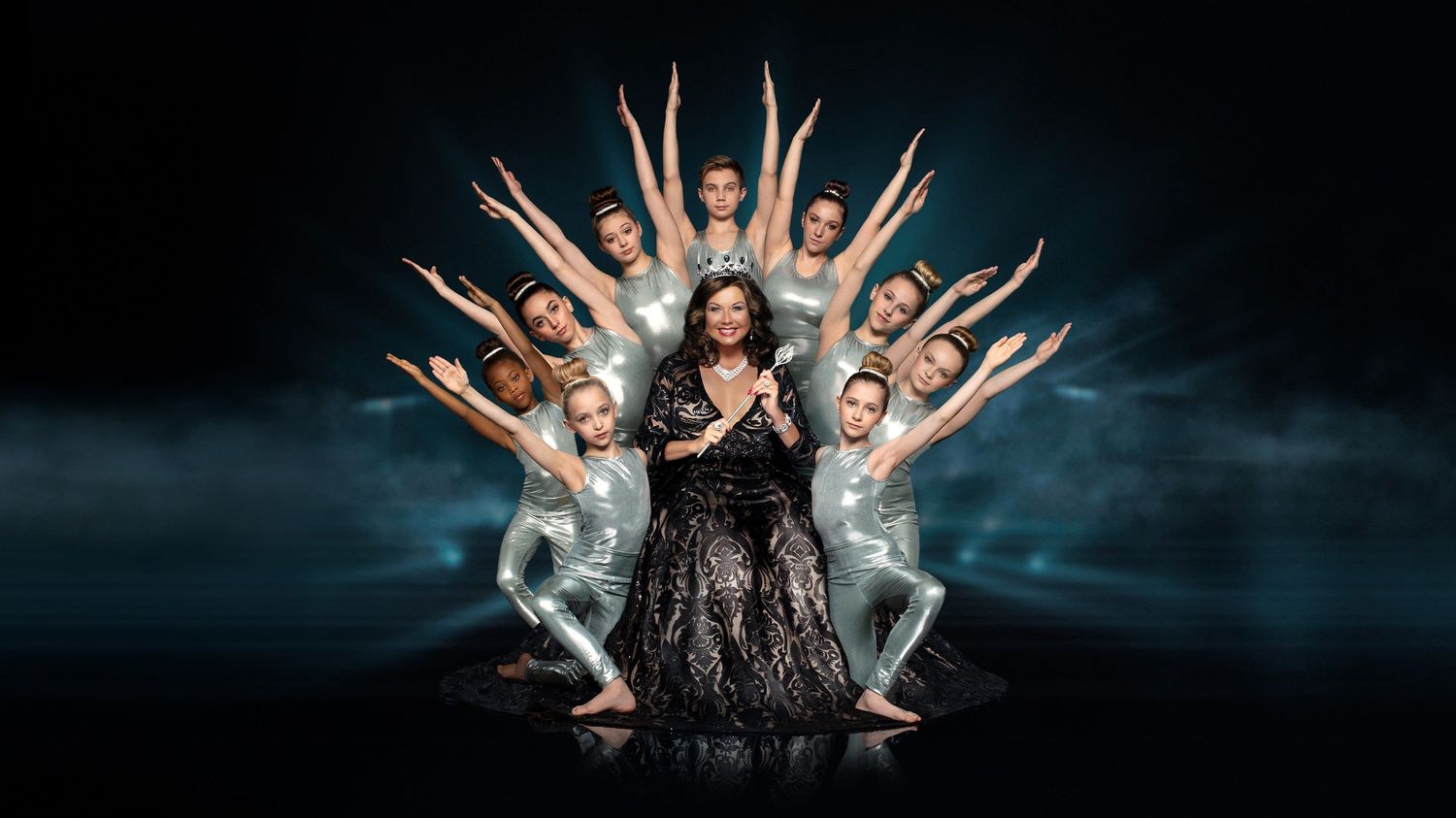Home>Events & Info>Ballet>What Is The Best Ballet Dance Floor


Ballet
What Is The Best Ballet Dance Floor
Modified: January 22, 2024
Looking for the best ballet dance floor? Discover top-rated options for ballet flooring, designed to provide optimal performance and safety during your dance sessions.
(Many of the links in this article redirect to a specific reviewed product. Your purchase of these products through affiliate links helps to generate commission for AudioLover.com, at no extra cost. Learn more)
Table of Contents
Introduction
Ballet is a timeless art form that requires precision, grace, and strength. From the delicate movements of a ballerina to the powerful leaps of a male dancer, ballet captivates audiences around the world. Behind every breathtaking performance, there is a carefully crafted ballet dance floor that provides the dancers with the necessary support and flexibility.
A proper ballet dance floor plays a crucial role in the dancer’s performance and overall safety. It offers the necessary traction to prevent slips and falls while allowing for fluid movements. The right dance floor can minimize the risk of injuries, provide shock-absorbing properties, and enhance the dancer’s technique.
Ballet dance floors come in various types, each with its unique characteristics and benefits. Marley floors, wooden floors, vinyl floors, and sprung floors are among the most common choices. The selection of a dance floor depends on factors such as the type of ballet being performed, the space available, and the budget.
In this article, we will delve into the different types of ballet dance floors, their benefits, and factors to consider when choosing the best option. We will also explore the maintenance and care required to prolong the lifespan of a ballet dance floor. So, whether you are a ballet dancer or a studio owner, read on to discover the best ballet dance floor for your needs.
Benefits of a Proper Ballet Dance Floor
A proper ballet dance floor offers numerous benefits for dancers of all levels, from beginners to professionals. Here are some key advantages of investing in a high-quality dance floor:
- Shock Absorption: A good ballet dance floor provides shock-absorbing properties, which help to reduce the impact on joints and muscles. This is especially important for dancers who perform intricate jumps and landings, as it promotes longevity and minimizes the risk of injuries.
- Traction: Traction is crucial in ballet to prevent slips and falls. A proper dance floor offers the right amount of grip, allowing dancers to maintain balance and execute movements with confidence. This is particularly beneficial for quick turns and jumps.
- Flexibility: Ballet requires flexibility in movement, and a well-designed dance floor enhances this aspect. It allows dancers to glide smoothly and perform fluid transitions between various steps and positions. The right amount of slip and grip ensures that movements are executed effortlessly.
- Comfort: Dancers spend hours on their feet, and a proper dance floor provides the necessary cushioning to minimize discomfort and fatigue. It helps to protect the feet and joints, allowing dancers to focus on their technique and performance without distractions.
- Durability: Investing in a quality dance floor ensures its durability and longevity. It can withstand the rigorous demands of ballet training and performances, making it a cost-effective choice in the long run. A durable dance floor also reduces the need for frequent replacements, saving both time and money.
These benefits highlight the importance of a proper ballet dance floor in optimizing performance, preventing injuries, and providing a comfortable environment for dancers to excel in their art. Now, let’s explore the different types of ballet dance floors available.
Types of Ballet Dance Floors
When it comes to ballet dance floors, there are several options to choose from. Each type of floor has its own unique characteristics, catering to different needs and preferences. Here are the most common types of ballet dance floors:
- Marley Floors: Marley floors are a popular choice in ballet studios and performance venues. Made from a vinyl composite material, Marley floors provide the perfect balance of slip and grip. They offer excellent traction, allowing dancers to execute turns and jumps with ease, while still providing enough slide for smooth movements. Marley floors have a slightly cushioned surface, reducing impact on joints and offering comfort for hours of practice.
- Wooden Floors: Wooden floors have been the traditional choice for ballet studios for many years. The smooth and resilient surface of hardwood provides excellent traction, allowing for precision footwork. Wooden floors also produce a distinct sound, enhancing the atmosphere and rhythm of ballet. However, they may lack some shock absorption properties, and maintenance is required to keep the wood in optimal condition.
- Vinyl Floors: Vinyl floors are durable and cost-effective options for ballet dance floors. They offer good traction and are easier to maintain compared to wood. Vinyl floors come in a variety of thicknesses and can provide some shock absorption properties depending on their construction. However, they may lack the same level of slide as Marley floors.
- Sprung Floors: Sprung floors are specifically designed to absorb impact and reduce strain on the joints. They consist of multiple layers, including a resilient subfloor that provides shock absorption and a top surface for traction and slide. Sprung floors are ideal for professional ballet companies and high-level training facilities where the demands on the dancers’ bodies are significant. However, they can be quite costly and require professional installation.
When selecting a ballet dance floor, it is essential to consider factors such as the type of ballet being performed, the available space, budget, and the specific needs of the dancers. Now that we have covered the different types of ballet dance floors, let us move on to discussing the factors to consider when choosing the best option for your dance studio or performance space.
Marley Floors
Marley floors are a popular choice for ballet studios and performance venues around the world. These floors are made from a vinyl composite material that offers a well-balanced combination of slip and grip. Here are some key features and benefits of Marley floors:
- Surface Texture: Marley floors have a smooth surface texture that allows dancers to execute turns and jumps with ease. The slight grip provided by the surface ensures that dancers have enough traction to maintain balance and control, while still allowing for fluid movements.
- Shock Absorption: Marley floors offer excellent shock absorption properties, reducing the impact on dancers’ joints and muscles. This is particularly important in ballet, where dancers perform intricate jumps and landings that can put strain on the body. The shock-absorbing properties of Marley floors help to prevent injuries and promote longevity in dance careers.
- Durability: Marley floors are designed to withstand the rigorous demands of ballet training and performances. They are durable and long-lasting, providing a cost-effective flooring solution for dance studios. With proper care and maintenance, a Marley floor can last for many years, making it a reliable investment.
- Easy Maintenance: Marley floors are relatively easy to clean and maintain. Regular sweeping or vacuuming to remove dust and debris, followed by damp mopping with a mild cleaning solution, is usually sufficient to keep the floor in good condition. Additionally, the vinyl surface of Marley floors is resistant to water, making them a suitable choice for studios where spills may occur.
- Versatility: Marley floors are available in a variety of colors and widths, allowing for customization to match the aesthetic and needs of the dance studio. The versatility of Marley floors makes them suitable for not only ballet but also other dance styles such as contemporary, jazz, and modern.
It is important to note that Marley floors should be installed by professionals to ensure proper alignment and installation techniques. This will ensure the longevity and performance of the floor.
Overall, Marley floors provide the perfect balance of slip and grip, shock absorption, durability, and easy maintenance. Their versatility makes them a preferred choice for ballet dancers and studio owners alike. The next section will discuss another popular type of ballet dance floor – wooden floors.
Wooden Floors
Wooden floors have long been a traditional choice for ballet studios. They offer a classic and elegant look while providing dancers with a smooth and resilient surface to perform on. Here are some key features and benefits of wooden floors for ballet:
- Traction: Wooden floors offer excellent traction, allowing dancers to execute precise footwork with ease. The natural grip provided by the wood ensures that dancers have the necessary control and stability during movements, including turns, jumps, and quick changes in direction.
- Distinct Sound: One of the unique characteristics of wooden floors in ballet is the distinct sound produced when dancers’ shoes make contact with the surface. This sound adds to the ambiance and rhythm of ballet performances, enhancing the overall experience for both performers and audiences.
- Durability: Well-maintained wooden floors can withstand the daily demands of ballet training and performances. They are known for their durability and can last for many years with proper care. Regular cleaning and occasional refinishing help to preserve the wood and maintain its optimal condition.
- Customization: Wooden floors can be customized in terms of the type of wood used, the finish, and even the color. Oak, maple, and beech are among the popular choices for ballet studio floors. The ability to choose the specific wood and finish allows studio owners to create a unique look and feel that aligns with their vision.
- Warmth and Comfort: Wooden floors provide a warm and inviting atmosphere in ballet studios. Unlike some other dance floor materials, wood has a natural warmth to it, which can contribute to the comfort of dancers. The slight give of the wood also offers some shock absorption, reducing the strain on dancers’ joints.
While wooden floors offer many benefits for ballet, it is important to note that they require regular maintenance to keep them in optimal condition. This includes sweeping or vacuuming to remove dust and debris, occasional mopping with a mild cleaning solution, and periodic refinishing to restore the surface and protect the wood.
Wooden floors have been a staple in ballet studios for generations, providing dancers with a reliable and aesthetically pleasing surface to perform on. In the next section, we will explore another type of ballet dance floor – vinyl floors.
Vinyl Floors
Vinyl floors are a popular choice for ballet studios and rehearsal spaces. These floors offer durability, affordability, and ease of maintenance, making them a practical option for dancers. Here are some key features and benefits of vinyl floors for ballet:
- Traction: Vinyl floors provide dancers with good traction, allowing them to execute movements with control and stability. The surface texture of vinyl floors strikes a balance between slip and grip, ensuring that dancers can perform turns, jumps, and other intricate footwork with confidence.
- Durability: Vinyl floors are known for their durability and resilience. They can withstand the rigorous demands of ballet training and performances, making them a cost-effective choice for studio owners. Vinyl floors are resistant to wear, scratches, and stains, ensuring that they maintain their aesthetic appeal over time.
- Easy Maintenance: One of the advantages of vinyl floors is their low-maintenance nature. They are easy to clean and require minimal upkeep. Regular sweeping or vacuuming, along with occasional mopping using a mild cleaning solution, is typically sufficient to keep vinyl floors in good condition. Their resistance to water makes them a suitable choice for dance studios where spills may occur.
- Versatility: Vinyl floors come in a wide range of colors, patterns, and thicknesses, allowing for customization to suit the aesthetic preferences of the studio. They can be installed as rolls or tiles, providing flexibility in design options. Vinyl floors can also mimic the appearance of other materials, such as wood or marble, offering versatility in creating the desired ambiance.
- Budget-Friendly: Vinyl floors are generally more affordable compared to other types of dance floors, making them an attractive option for studio owners who are mindful of their budget. The lower cost does not compromise the quality and performance of the flooring, making vinyl a cost-effective choice for ballet studios.
While vinyl floors offer several benefits, it’s important to note that they may not provide the same level of slide as marley floors, which can be a consideration depending on the specific needs of dancers and choreography. Additionally, cushioning and shock absorption may vary depending on the thickness and construction of the vinyl floor.
Vinyl floors are a practical and versatile option for ballet studios, providing dancers with good traction, durability, and easy maintenance. In the next section, we will explore another type of dance floor specifically designed to prioritize the safety and comfort of dancers – sprung floors.
Sprung Floors
Sprung floors are a specialized type of dance floor specifically designed to prioritize the safety and comfort of dancers. These floors consist of multiple layers that work together to absorb impact and reduce strain on the joints. Here are some key features and benefits of sprung floors for ballet:
- Shock Absorption: The primary advantage of sprung floors is their superior shock absorption properties. They employ a system of springs or foam pads that provide cushioning, minimizing the impact on the dancers’ joints and muscles. This is especially important in ballet, where dancers perform demanding movements that can put significant strain on the body.
- Injury Prevention: Sprung floors help to prevent injuries by reducing the risk of stress-related fractures, shin splints, and other common dance-related injuries. The shock absorption provided by the floor absorbs much of the force generated by landings and jumps, protecting the dancers from repetitive impact injuries.
- Enhanced Technique: The superior shock absorption and support offered by sprung floors allow dancers to focus on improving their technique and achieving their maximum potential. With the reduced strain on their bodies, dancers can execute movements with more precision and control, achieving higher levels of artistry in their performances.
- Improved Performance: Sprung floors contribute to the overall performance quality. The controlled resilience of the floor facilitates smoother movements and allows for seamless transitions between steps. Dancers can also achieve better balance and stability, enhancing their ability to execute complex turns and jumps with confidence.
- Professional Standard: Sprung floors are often found in professional ballet companies, high-level training facilities, and performance venues. They meet the rigorous requirements of professional dancers and provide them with the optimal conditions necessary for their training and performances. Sprung floors are recognized as a standard for ensuring the safety and well-being of dancers.
It is important to note that the installation of sprung floors requires professional expertise to ensure the proper configuration and functionality of the system. Studio owners must consider factors such as the space available, the weight-bearing capacity of the floor structure, and the specific needs of the dancers when opting for sprung floors.
Sprung floors are a valuable investment for ballet studios and performance venues, offering unmatched shock absorption, injury prevention, and enhanced technique. While they tend to be more expensive than other types of dance floors, the benefits they provide make them well worth considering. In the next section, we will explore the factors to consider when choosing the best ballet dance floor for your specific needs.
Factors to Consider when Choosing a Ballet Dance Floor
Choosing the right ballet dance floor is crucial to ensure optimal performance, safety, and comfort for dancers. Here are some important factors to consider when selecting a dance floor for your ballet studio or performance space:
- Type of Ballet: Consider the specific style of ballet being performed in your studio. Different types of ballet may have different requirements in terms of traction, slide, and shock absorption. For example, classical ballet may require a floor with more grip, while contemporary ballet may benefit from a floor with a smoother slide.
- Available Space: Evaluate the size and layout of your studio or performance space. Consider the dimensions and ensure that the dance floor can fit comfortably within the space. Additionally, take into account any specific requirements or limitations regarding the installation and maintenance of the floor.
- Budget: Determine your budget for the dance floor. Different types of dance floors come at various price points, so it’s important to find a balance between cost and quality. Remember to consider long-term durability and maintenance costs when factoring in your budget.
- Dancers’ Needs: Take into consideration the specific needs and preferences of the dancers who will be using the floor. Consider factors such as their skill level, any specific health conditions or injuries, and their comfort during movements. This will help ensure that the chosen dance floor meets their requirements and allows them to perform at their best.
- Maintenance Requirements: Consider the level of maintenance and care required for each type of dance floor. Some floors may require more frequent cleaning, refinishing, or repairs compared to others. Evaluate the time and resources you can allocate for maintenance to ensure the longevity and performance of the floor.
- Professional Advice: Seek guidance from professionals, such as dance flooring experts or studio designers, who can provide expert advice based on their experience and knowledge. They can help assess your specific needs, recommend suitable options, and assist with the installation process to ensure optimal performance and safety.
By considering these factors, you can make an informed decision when choosing the right ballet dance floor for your studio or performance space. It’s important to prioritize the well-being and needs of the dancers while also considering practical aspects such as budget and maintenance requirements. Now that you have a good understanding of the factors to consider, let’s move on to discussing the maintenance and care of ballet dance floors.
Maintenance and Care of Ballet Dance Floors
Maintaining and caring for your ballet dance floor is essential to ensure its longevity, optimal performance, and the safety of your dancers. Here are some important tips for maintaining and caring for your ballet dance floor:
- Regular Cleaning: Sweep or vacuum the dance floor regularly to remove dust, dirt, and other debris. This prevents the build-up of particles that can affect the floor’s grip and performance. For a deeper clean, use a mild cleaning solution and mop the floor, taking care not to oversaturate the surface.
- Immediate Spill Cleanup: Accidental spills should be cleaned up immediately to prevent any potential damage to the floor. Use a clean cloth or mop to absorb the liquid and follow up with the appropriate cleaning method for your specific dance floor type.
- Avoid Moisture: Moisture can be damaging to some dance floor materials, so it’s important to keep the floor as dry as possible. Avoid dancing with wet shoes or allowing water to remain on the floor for an extended period. Use mats or towels near entryways or in areas prone to moisture to help absorb any excess liquid.
- Protective Coverings: When the dance floor is not in use, consider covering it with protective floor coverings. This can help prevent scratches, scuffs, and other damage caused by heavy equipment or regular foot traffic. Be sure to use coverings specifically designed for dance floors to maintain the floor’s performance characteristics.
- Inspect for Damage: Regularly inspect the dance floor for any signs of damage, such as cracks, unevenness, or loose sections. If you notice any issues, address them promptly and consider seeking professional assistance for repairs or replacement if necessary.
- Follow Manufacturer Guidelines: Different dance floors may have specific care and maintenance guidelines provided by the manufacturer. Familiarize yourself with these guidelines and follow them accordingly to ensure the longevity and performance of your specific dance floor type.
- Professional Maintenance: Depending on the type of dance floor, periodic professional maintenance may be required. This can include tasks such as refinishing, resealing, or adjusting the floor’s support systems. Consult with experts who specialize in dance floor maintenance to ensure that the floor is properly cared for over time.
Proper maintenance and care of your ballet dance floor is essential to preserve its performance characteristics and ensure the safety and comfort of your dancers. By following these guidelines, you can extend the lifespan of your dance floor and create an optimal environment for the artistry of ballet.
Now that we have covered the essential maintenance and care tasks, let’s conclude our discussion on ballet dance floors.
Conclusion
Choosing the right ballet dance floor is a crucial decision for dancers and studio owners alike. A proper dance floor provides the necessary support, traction, and shock absorption, enabling dancers to excel in their performances while minimizing the risk of injuries. Throughout this article, we have explored various types of ballet dance floors, including Marley floors, wooden floors, vinyl floors, and sprung floors, each with its own unique features and benefits.
Marley floors offer a well-balanced combination of slip and grip, with excellent shock absorption and durability. Wooden floors provide dancers with excellent traction and a traditional aesthetic, while vinyl floors offer affordability, easy maintenance, and versatility in design options. Sprung floors prioritize shock absorption, injury prevention, and enhanced technique, making them ideal for professional ballet companies and high-level training facilities.
When choosing a ballet dance floor, it is essential to consider factors such as the type of ballet being performed, the available space, budget, and the specific needs of the dancers. Additionally, proper maintenance and care of the dance floor are vital for its longevity and performance. Regular cleaning, immediate spill cleanup, avoiding moisture, and following manufacturer guidelines are some of the key aspects to keep in mind.
By selecting the right ballet dance floor and ensuring its proper maintenance, dancers can perform at their best, with confidence, comfort, and safety. Studio owners can create an optimal environment conducive to artistic expression, while also prolonging the lifespan and return on investment of the dance floor.
Ultimately, the choice of a ballet dance floor is a significant investment that can greatly impact the success and enjoyment of ballet training and performances. By considering the needs of the dancers, the space requirements, and the budget, you can make an informed decision that will provide years of dance excellence. So, take the time to evaluate your options, seek professional advice if needed, and select the best ballet dance floor for your studio or performance space.











